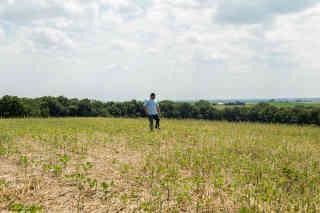CERNA will test indigenous agricultural knowledge and techniques and share that knowledge with Native American producers in a multi-state region to reflect climate-smart practices, provide long lasting soil and water health benefits, and expand climate-smart commodity markets. Project partners plan to provide each producer annual incentives and premium payments and a one-time financial assistance payment for education and training. Additionally, CERNA plans to purchase the project’s eligible climate-smart commodities, which would be “Regenified” branded under premium contracts.
I’m impressed with how this project intertwines indigenous values with climate smart innovations. It’s also a great example of how climate-smart agriculture is driven by the producers who are impacted and challenged by climate change.

Iowa Tribe of Kansas and Nebraska Chairman Timothy Rhodd acknowledged many of these challenges during our December 20 virtual event.
“Several years ago, we almost leased all of our land acres due to the challenges of conventional farming and commodity markets,” Rhodd said. “This is what led us down the path to make significant changes with our agricultural model. What if we marry the indigenous native ecological processes along with Western science? Just think of the social impact that we can create. This is what CERNA will become.”
CERNA is partnering with the company Terramera and others to help measure the environmental benefits of the climate smart commodities produced through the project.
“We are excited to start quantifying the benefits that are happening in the soil, like increases in soil health and carbon, and building a set of best practices that show how to best manage to those outcomes,” said Terramera CEO Karn Manhas.
Partnerships for Climate-Smart Commodities is designed to create an additional revenue stream, strengthen local farming systems and markets and put profits back in the pockets of our local producers, keeping them on the land no matter their farm size or type of operation. I am excited to see this project demonstrate how to meet this challenge by incorporating indigenous traditional ecological knowledge and indigenous agricultural techniques with modern food production.
Source : usda.gov